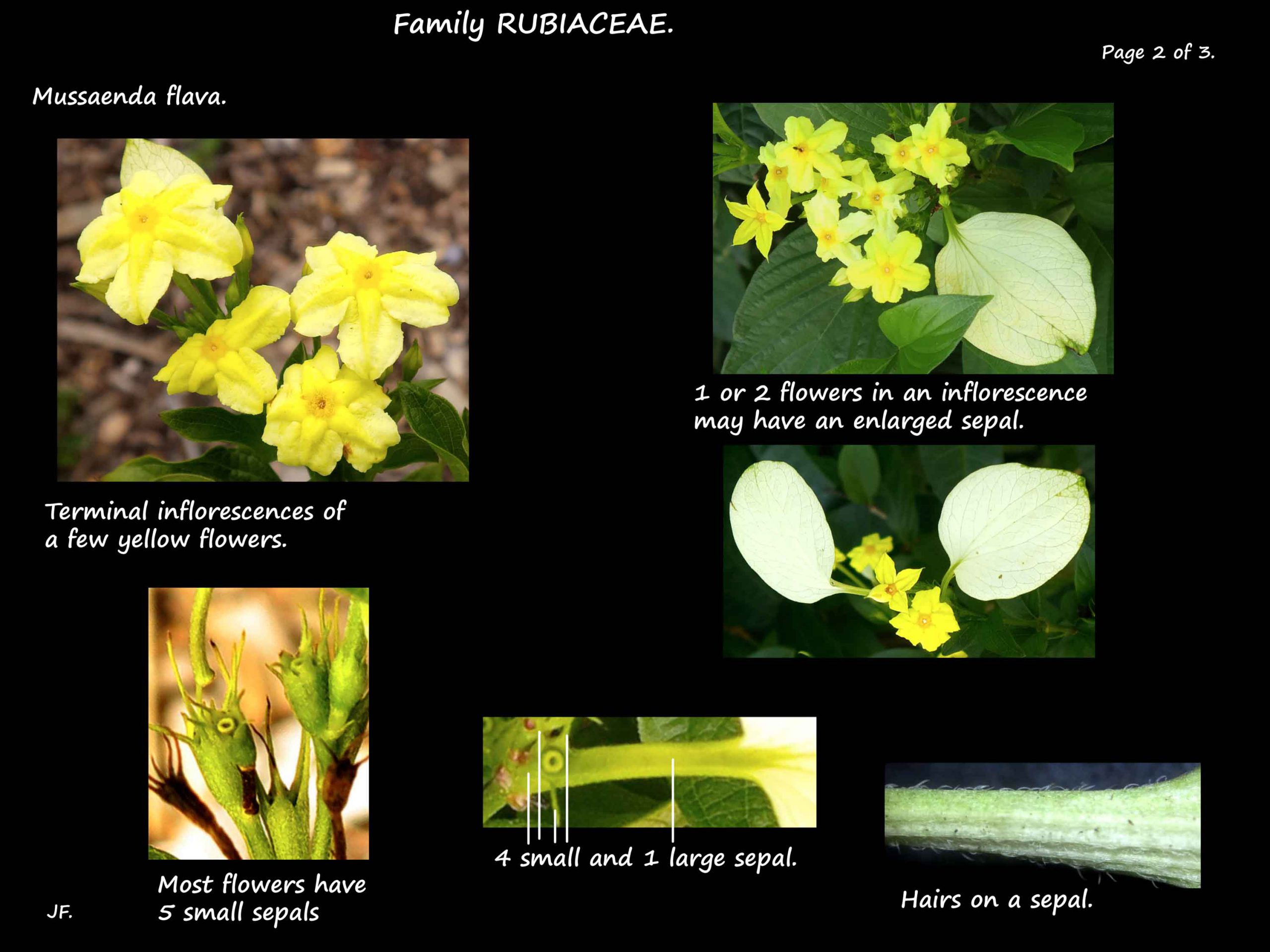Mussaenda flava.
Synonyms include Pseudomussaenda flava, M. lutea and M. luteola.
They are commonly known as Dwarf Yellow Mussaenda or White Wing.
Used in gardens they are small evergreen shrubs around 2 m high.
The opposite leaves, on a short petiole, are ovate to elliptic with a pointed tip.
The terminal inflorescences are small clusters of yellow flowers.
There are small, narrow bracts and bracteoles.
One or more flowers in each inflorescence has one of the 5 sepals enlarged.
The enlarge sepal is white or a very pale cream with greenish veins.
The flowers have a narrow corolla tube 2 cm long with 5 lobes.
The lobes, with rounded tips, are yellow or pale cream and slghtly wrinkled.
Each lobe has a raised, central rib that joins with its neighbours at the base.
These ribs are a darker yellow and look like a star in the centre of the flower.
Younger flowers have pointed lobes with less prominent ribs.
There are dense, yellow hairs in the throat and upper part of the corolla tube.
The anthers lie among the hairs.
Pseudomussaenda.
There are 5 species that are native to Africa.
They are very similar to Mussaendas.
They are erect or scrambling shrubs.
The opposite leaves, on petioles, have bi-lobed, interpetiolar stipules.
The terminal inflorescences hold bisexual flowers with parts in 5’s.
One or more of the sepals is enlarged.
The bases of the petals are fused into a corolla tube.
The 5 (4) lobes have a long, pointed tip.
The upper part of the tube is swollen to accommodate the anthers.
There are hairs in the upper part of the tube.
The ovary has 2 locules with numerous ovules in each.
The style can be long or short.
The tip of the bi-lobed stigma extends just past the throat of the corolla tube.
The fruit differ from Mussaenda in being mostly capsules.
J.F.




